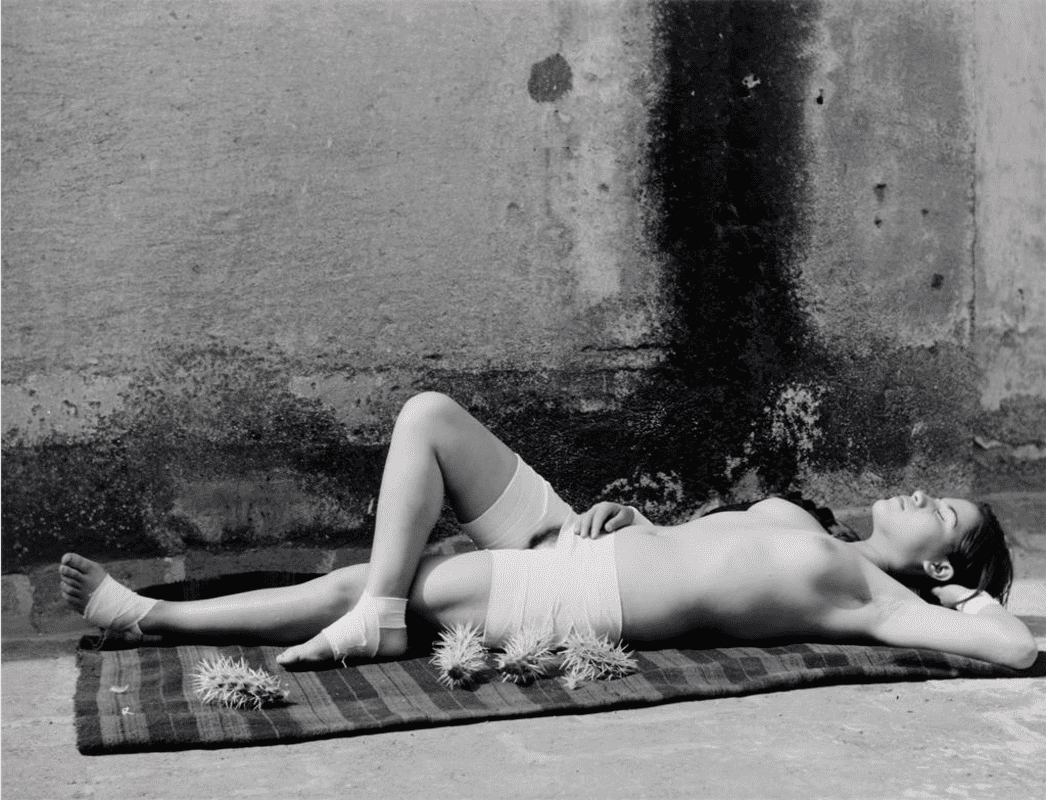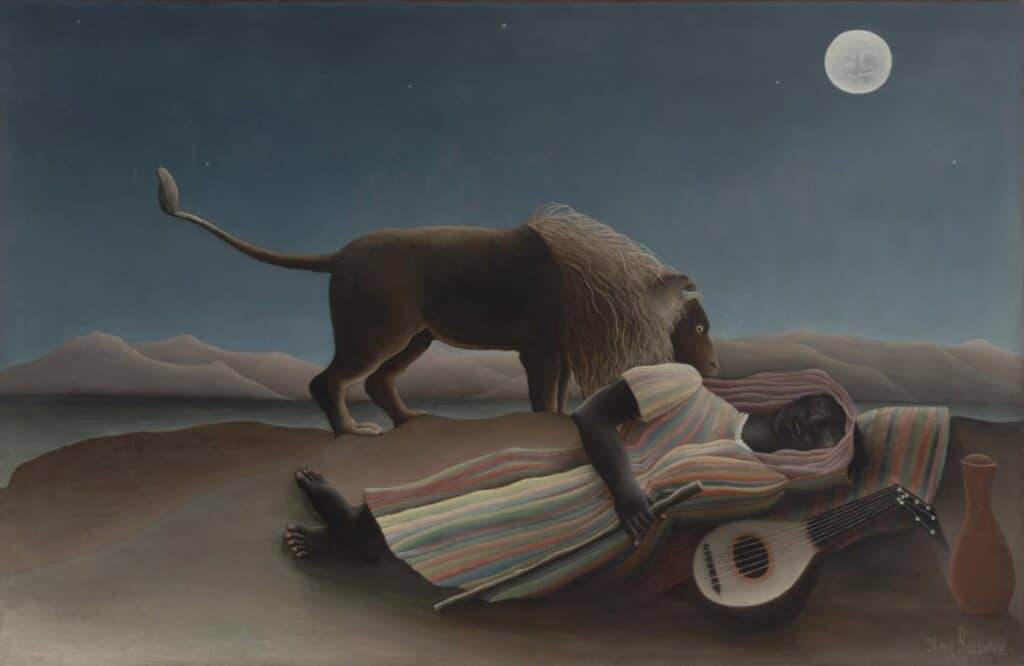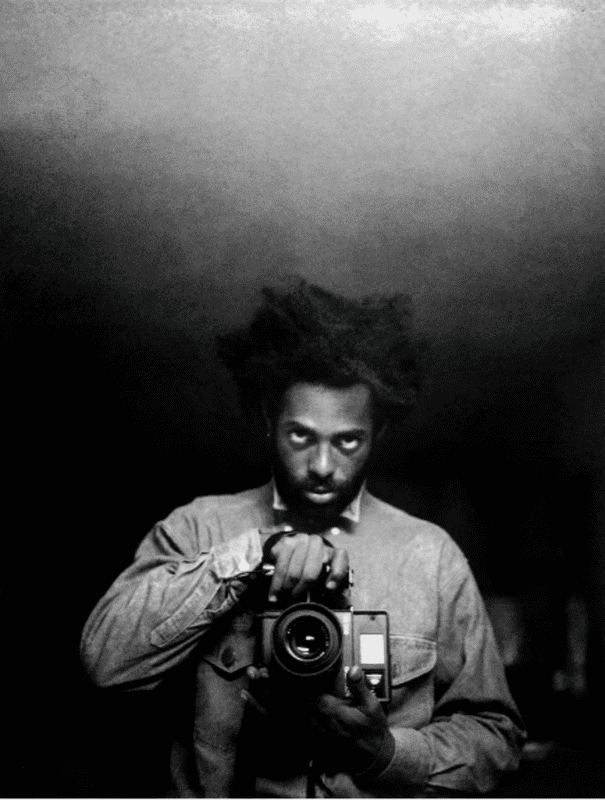
When you’ve often seen an image, it can become easy to ignore it. The Photographers Gallery’s sales department currently features the great Mexican Manuel Álvarez Bravo (1902-2002) and includes one of his most famous images, ‘La buena fama durmiendo’ (Good Reputation Sleeping), 1938. We can also read his account of its production. Álvarez Bravo explains that he had taken photographs of dancers in rehearsal, with their feet bound as a precaution, the year before. That triggered the idea of using of bandages for visual interest, and he asked a doctor friend to apply them to his model. Recumbent, she put him in mind of Rousseau’s ‘The Sleeping Gypsy’, in which the lion may represent the danger of which the gypsy is dreaming. Álvarez Bravo echoed that by lining up star cacti beside the slumbering model.
In Spanish, they’re called ‘abrojos’ – literally ‘open eyes’, a reminder to keep a lookout for their sharp thorns. That, of course, she is not doing, despite the vulnerability implied by sleeping in public and the pain awaiting should she turn in her sleep. The result seems to deliver a stated aim of André Breton, in his 1924 ‘Manifesto of Surrealism’, that dreams and reality should be harmonised into one simultaneous state. No doubt the combination of covering and revealing, and the suggestion of bondage, have also contributed to its popularity, together with the way – less usual nowadays – in which it erotises pubic hair. Yet the woman seems no victim, but confident enough to make herself vulnerable. All those factors generate an ambiguous and mutating charge which justify looking once more at ‘La buena fama durmiendo’.

Art writer and curator Paul Carey-Kent sees a lot of shows: we asked him to jot down whatever came into his head






